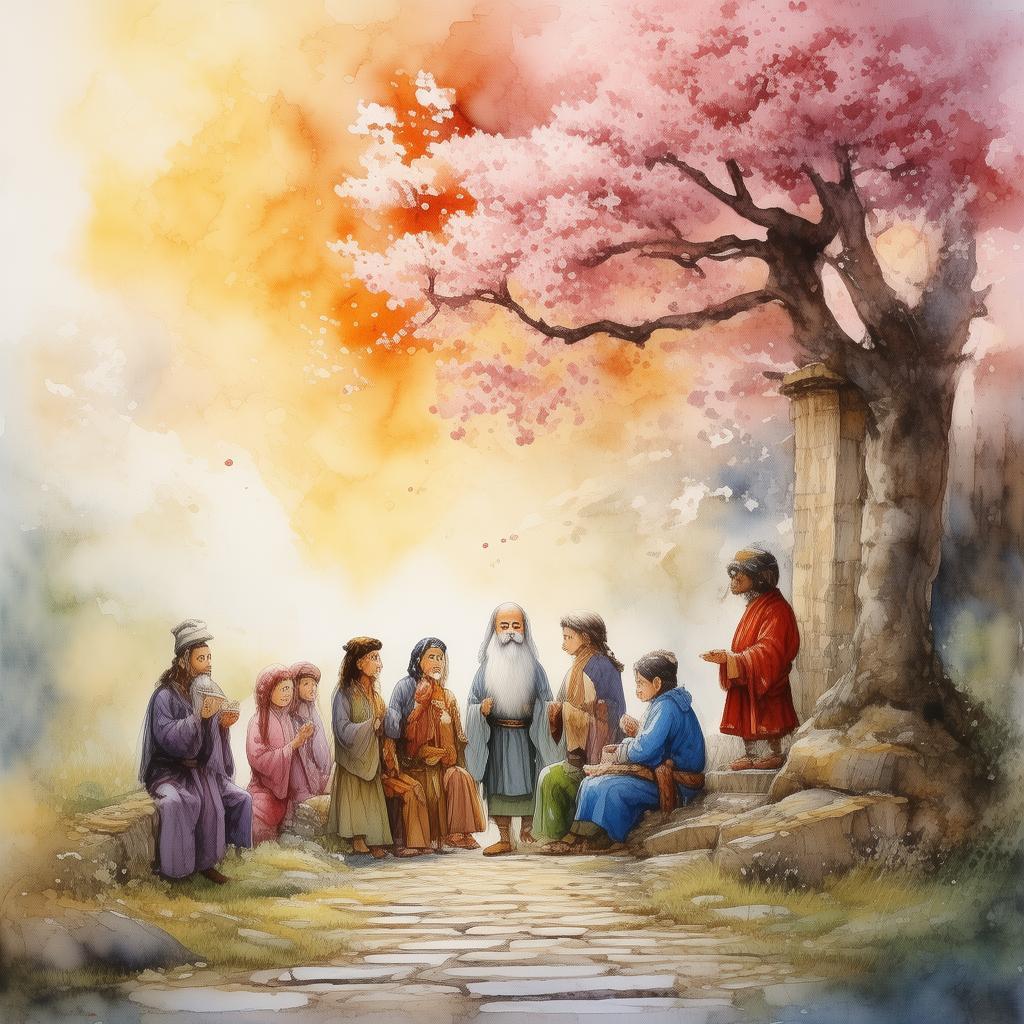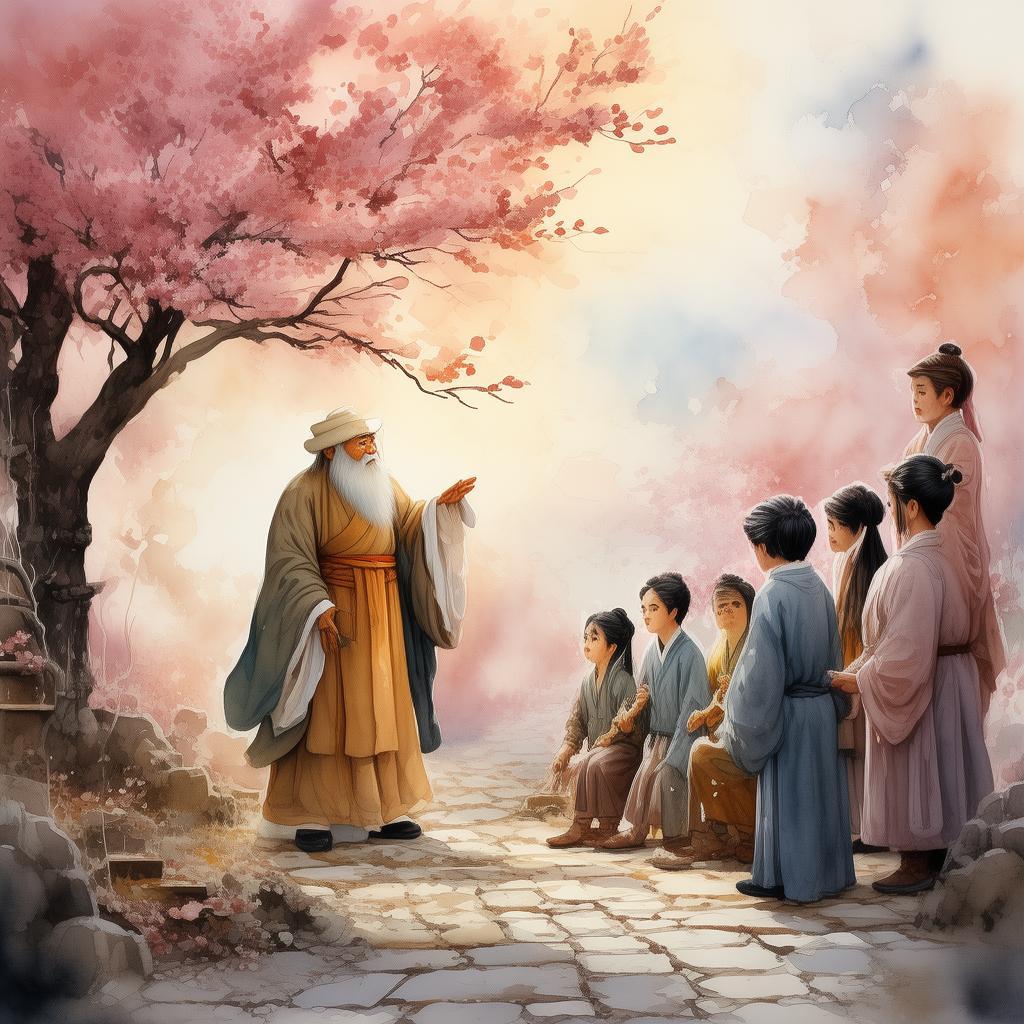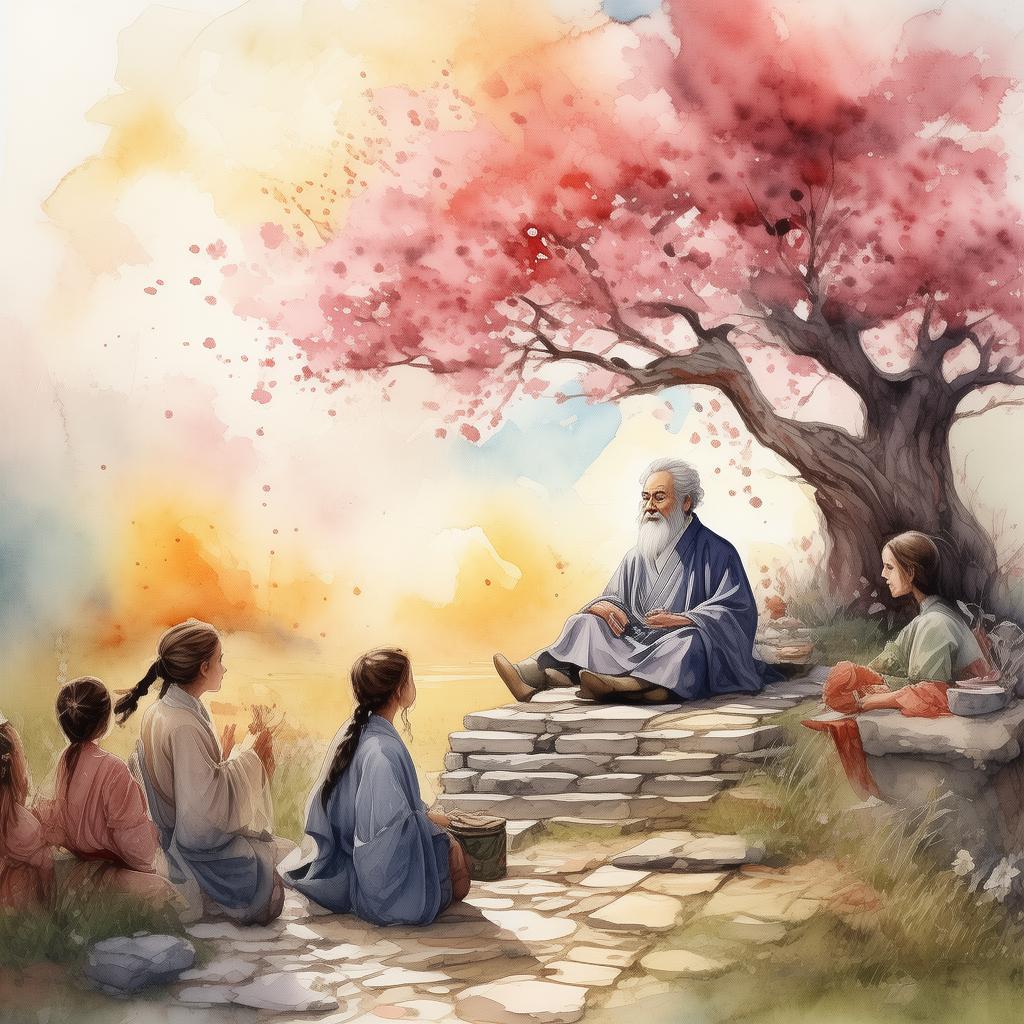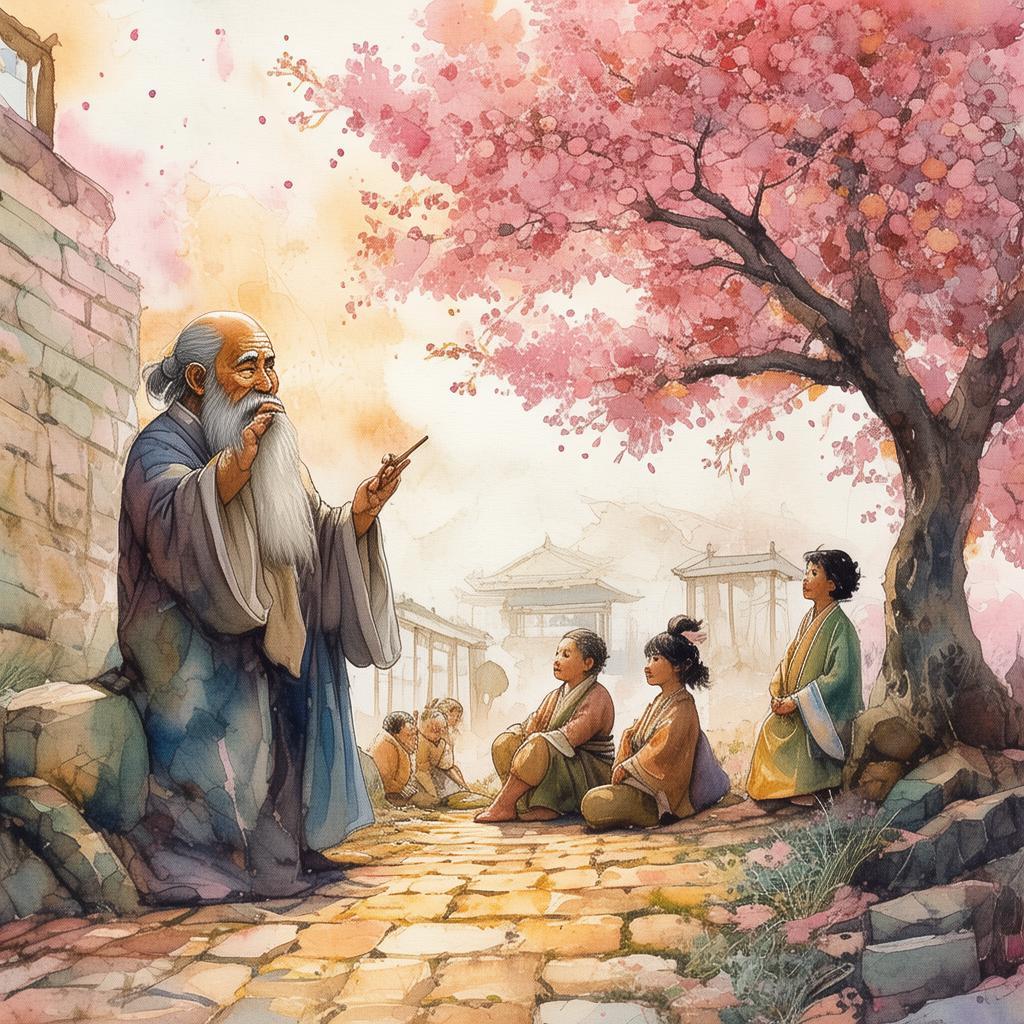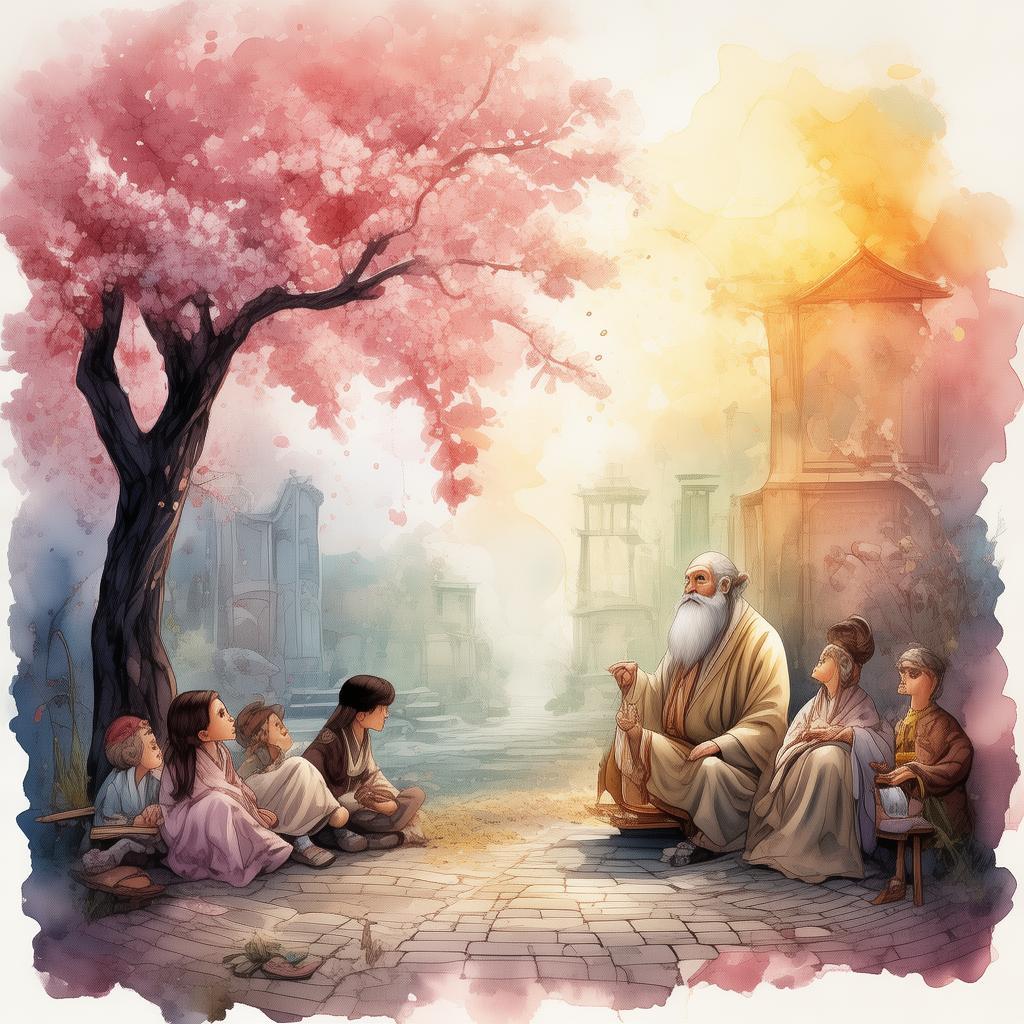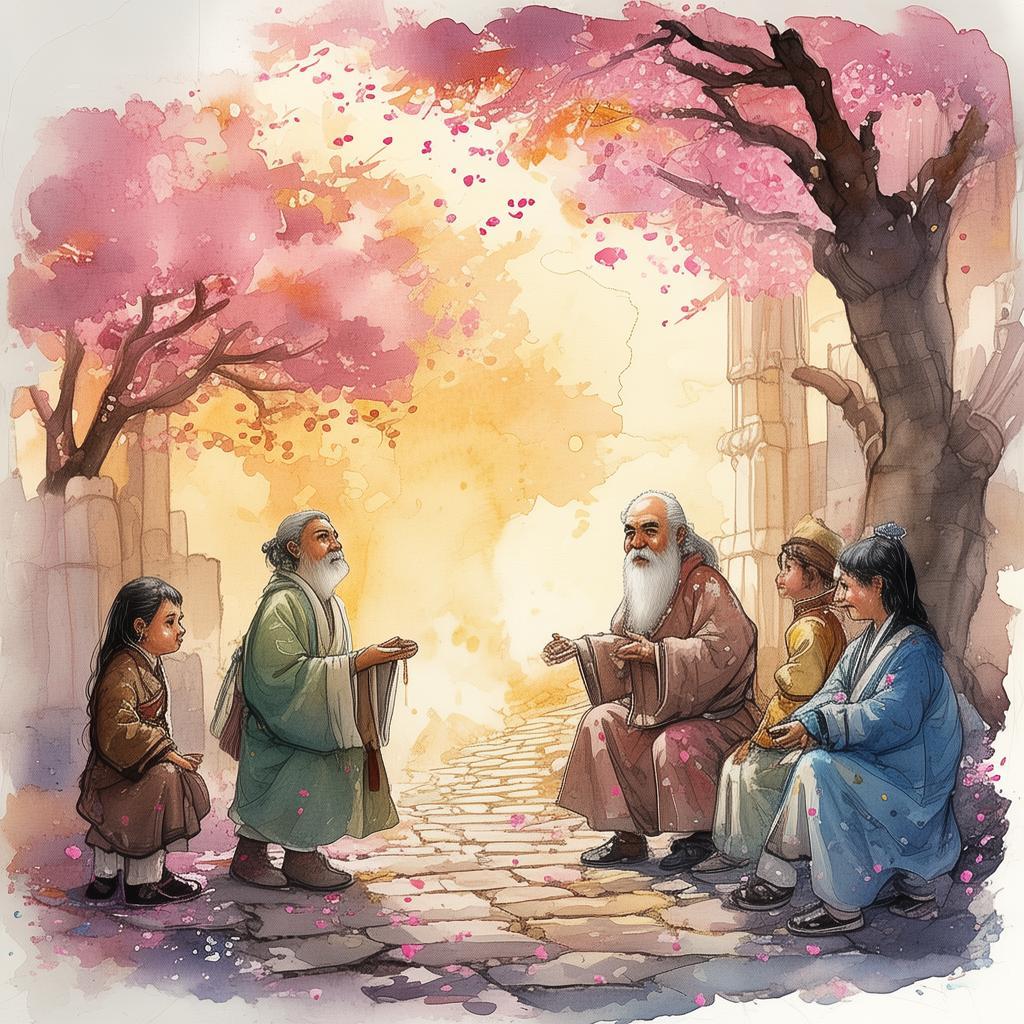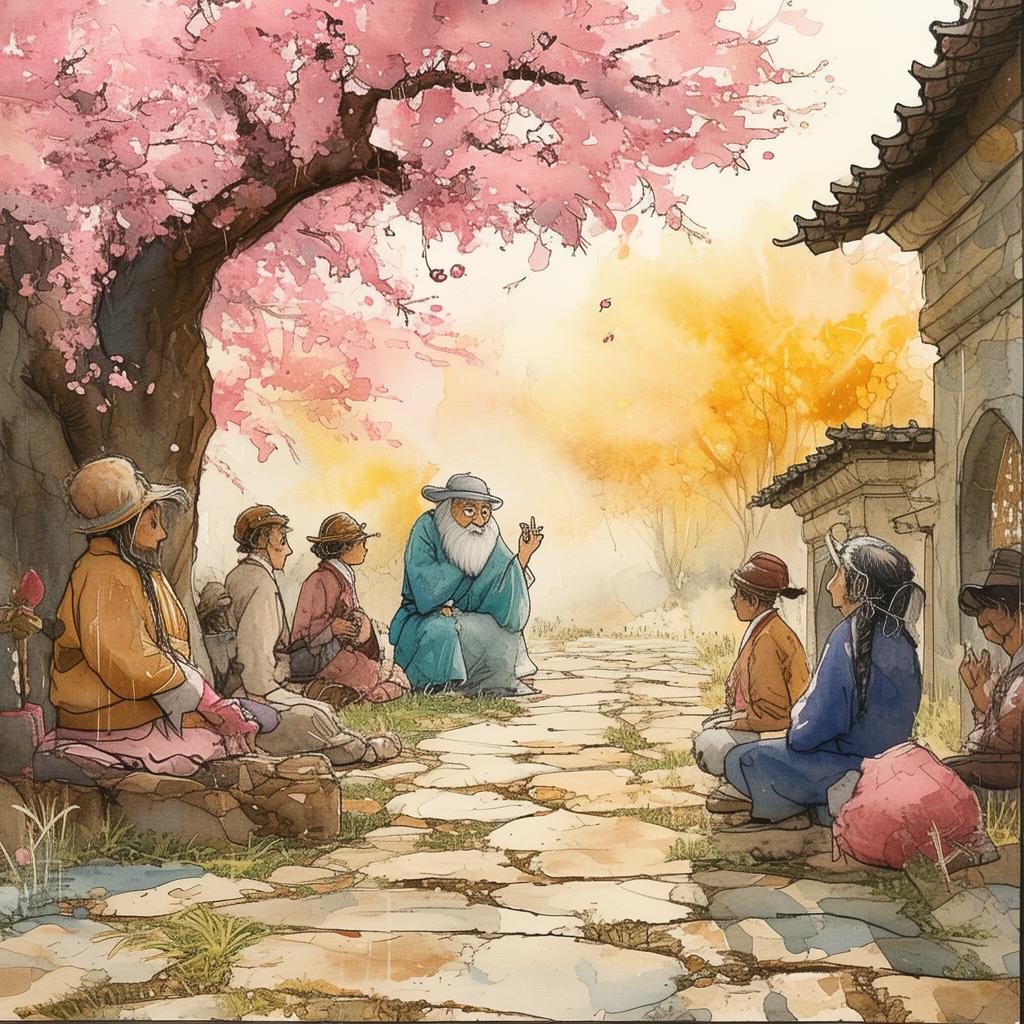The Garden of the Damned: A Blossoming Hope in the Abyss
In the heart of a desolate wasteland, where the sun baked the earth into a barren landscape, there was a garden that defied the very essence of the world around it. Known as The Garden of the Damned, it was said to be a place where the cursed grew, a place where hope and despair intertwined like the thorns and flowers that graced its soil.
The story revolves around a young gardener named Ling, whose life had been marred by the shadow of his father's crimes. Years of guilt and sorrow had driven him into the wasteland, seeking solace in the desolation that surrounded him. Yet, it was here that he stumbled upon the garden, a patch of green in the midst of a lifeless expanse.
The garden was a paradox. The flowers that bloomed there were vibrant and beautiful, yet their petals were tinged with a crimson that seemed to cry out for blood. The trees were tall and majestic, but their branches were twisted and gnarled, as if contorted by the weight of their own suffering. The air was thick with the scent of life, yet it was suffocating, a reminder that even the most beautiful things could be poisoned.
Ling was captivated by the garden. He saw it as a metaphor for his own life, a place where beauty and despair danced together in an eternal waltz. He began to tend to the garden, nurturing the flowers and trees, hoping to understand the paradox that he had stumbled upon.
As he worked, he discovered that the plants of the garden were not merely alive, but sentient. They spoke to him in riddles and parables, sharing the wisdom of the ages. One of the trees, a great oak known as Old Yew, revealed the true nature of The Garden of the Damned.
"You are in the heart of the abyss," Old Yew's voice echoed through the garden. "But within this abyss, there is a seed of hope. The flowers and trees here are not cursed, but rather, they have been chosen to serve as a beacon to those who have strayed from the path of righteousness. They are a testament to the fact that even in the darkest of places, beauty can be found."
Ling was moved by Old Yew's words. He realized that the garden was not a place of damnation, but rather, a place of redemption. It was a place where those who had been cursed could find forgiveness and healing.
One day, a young woman named Mei appeared at the garden's gate. She had been a victim of her own father's crimes and had sought refuge in the wasteland, much like Ling. When she discovered the garden, she was immediately drawn to it, just as Ling had been.

Ling and Mei began to work side by side, sharing their stories and their sorrows. They learned from each other, and together, they began to unravel the mysteries of the garden. They discovered that the plants of the garden were not merely sentient, but also powerful. Each plant had the ability to heal and restore, to bring forth life from the most barren of places.
As they worked, the garden began to change. The flowers grew taller and more vibrant, the trees straightened their twisted branches, and the air became lighter and more breathable. The garden became a place of sanctuary, a place where those who sought redemption could find peace.
One day, Ling and Mei faced a great challenge. A powerful sorcerer, who had once been a guardian of the garden, had been corrupted by his own ambition. He sought to drain the garden of its power, to use it for his own gain. Ling and Mei knew that they had to stop him.
With the help of the sentient plants, they devised a plan. They used the garden's power to create a barrier that would protect the garden from the sorcerer's wrath. As the sorcerer approached, he was met with the barrier, which he could not breach.
In a climactic battle, the sorcerer unleashed his darkest magic, but to no avail. The barrier held, and the garden was safe. The sorcerer, humbled by his failure, vowed to never again harm the garden or those who sought redemption within it.
The garden continued to flourish, and Ling and Mei became its guardians. They taught others to tend to the garden, to nurture its beauty and its power. They taught them that even in the darkest of places, hope could be found, and beauty could be created.
The Garden of the Damned became a symbol of hope, a reminder that even in the face of despair, there was always a chance for redemption. And so, in the heart of the abyss, a garden of blossoming hope continued to thrive, a testament to the enduring power of the human spirit.
✨ Original Statement ✨
All articles published on this website (including but not limited to text, images, videos, and other content) are original or authorized for reposting and are protected by relevant laws. Without the explicit written permission of this website, no individual or organization may copy, modify, repost, or use the content for commercial purposes.
If you need to quote or cooperate, please contact this site for authorization. We reserve the right to pursue legal responsibility for any unauthorized use.
Hereby declared.
